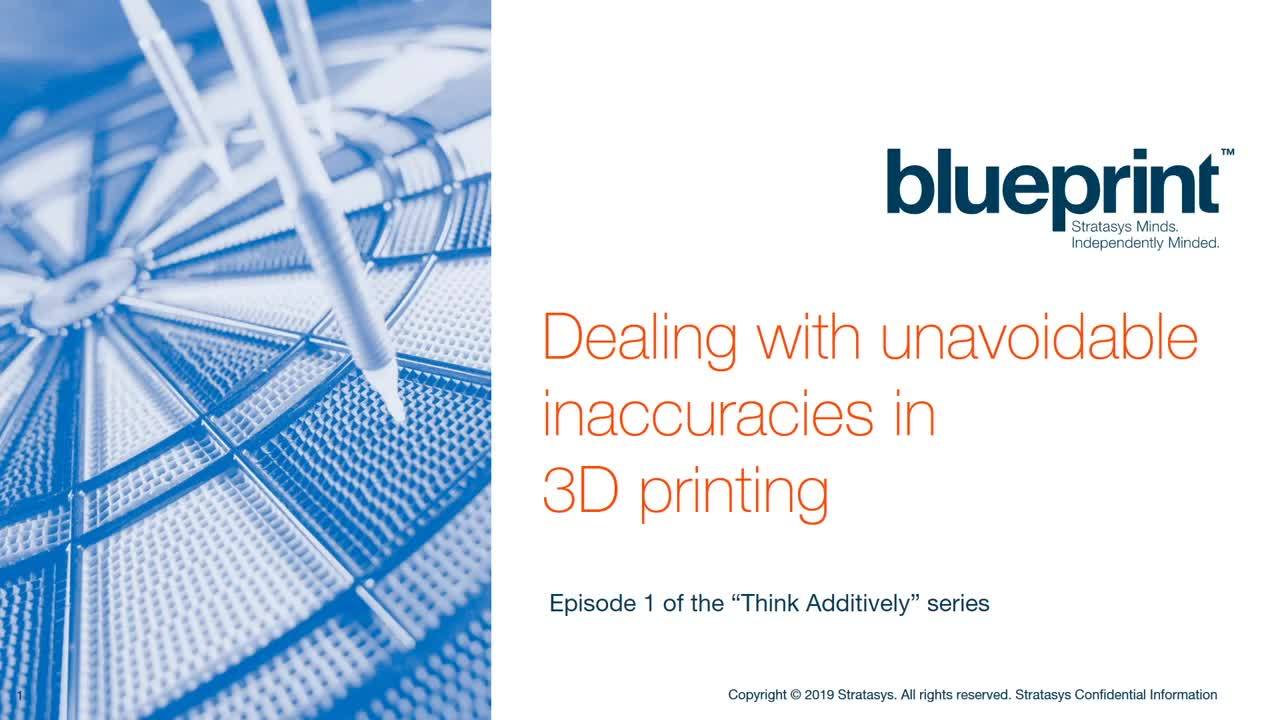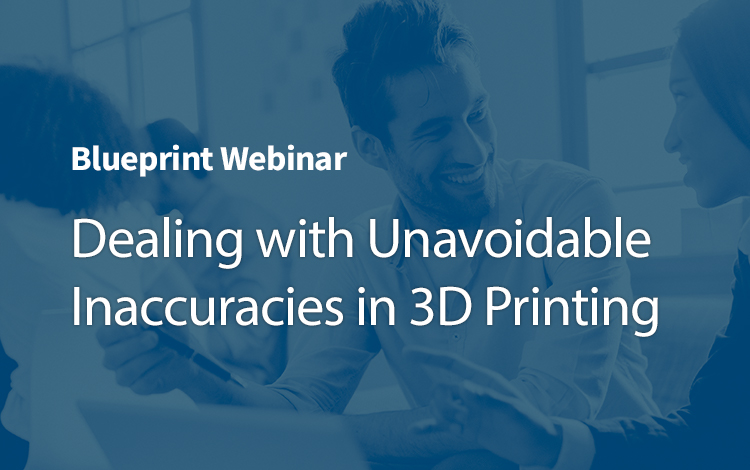
As much as we’d like 3D printing to be perfect, it is not. One failing is that, right now, parts are not accurate enough. As the technology improves so will part accuracy. What do we do now, however? Will accuracy limitations stop us from industrializing manufacturing with 3D printing? How can we make more accurate 3D printed parts today? What design and manufacturing constraints do we have to take into account today in order to make parts?
Blueprint Engineering consultant David Busacker will help you answer these questions in this webinar. The first webinar in the Thinking Additively Series, will take a closer look at part accuracy. David will look at Digital Tooling and through this lens look at the unavoidable inaccuracies in 3D printing. Digital Tooling is the idea that hard tooling will be replaced by digitally aproximate tooling. David will look at how the geometry of 3D printed files defines and describes them. By taking this into account he will look at how meshes, layers and the toolpaths influence inaccuracies. By looking at how these approximations are generated and used, you’ll get a better understanding of how 3D printed parts are described and made.
In the meshes section for example David looks at how meshes are made, why we use meshes, what detail levels in meshes mean and more. In layers, David explains how layers influence how parts are made and described. Through a simple well-illustrated example of a circle you’ll learn when a circle is not a circle and how layers influence accuracy. Vector and voxel-based toolpaths are also described graphically for you to understand better. During the 25 minute webinar, you’ll learn much more about the way that 3D printed objects and files contain inherent accuracies and how this influences 3D printed objects. We hope that you’ll learn from this deeper exploration of Additive Manufacturing and will stay tuned for new episodes in this webinar series.
